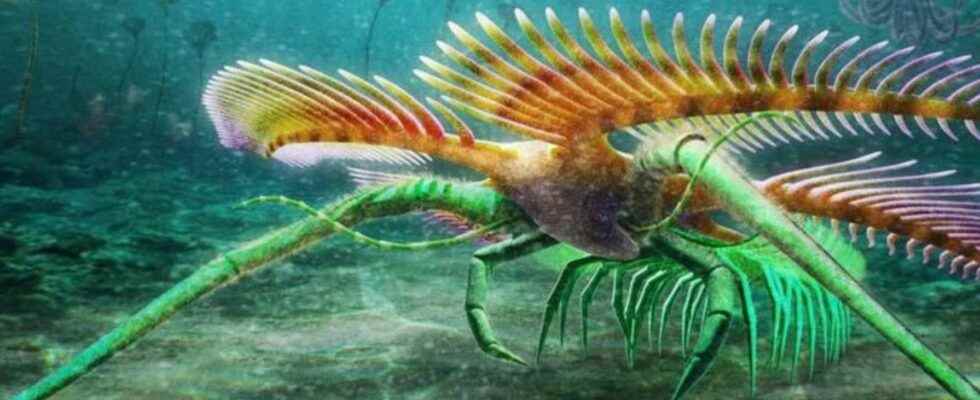In an ancient lake full of marine fossils in Canada, researchers have just found one of the strangest: a blind arthropod, which used stilts to get around!
You will also be interested
[EN VIDÉO] 5 animals that are living fossils The platypus, nautilus, cockroach, coelacanth or pig-nosed turtle have evolved very little over millions of years.
Near Lake Simcoe in southern Canada is a quarry filled with marine fossils. To the point where it was recently nicknamed “Paleo Pompeii”! In this quarry, scientists have unearthed many fossils dating fromOrdovicianthe second period of the Paleozoic which extends from 488 million years ago to 444 million years ago. At that time, no quarry but water, more precisely a shallow tropical sea which covered the majority of present-day Canada. Little by little, the storms have transformed the landscape, covering the sea with sedimentand its inhabitants at the same time. “What we’re seeing is the rapid burial of these organisms that lived on this flat, shallow ocean floor and were repeatedly smothered by large underwater mudslides from storms.”says Joseph Moysiuk, first author of a study published in the journal Journal of Paleontology and biology researcher scalable at the Royal Ontario Museum.
Within “Paleo Pompeii”, the team of paleontologists has found a creature that is surprising to say the least! Named Tomlinsonus dimitriiit belongs to a class ofextinct arthropods, the marrellomorphs, which populated the oceans 450 million years ago. Her body, the researchers report, is in exceptionally well-preserved condition, especially since she has a soft body!
A well-preserved marrellomorph arthropod
In most cases, this type of body does not fossilize, but decomposes. “When we think of fossils, we usually think of things like bones and shells of dinosaurs. However, soft tissue preservation is very rare, and there are only a few sites in the world where soft-bodied organisms have been found.”, details J. Moysiuk. According to paleontologists, this newly discovered specimen resembles another species ofarthropod extinct soft-bodied, called marrella splendensfound in Burgess Shale in British Columbia.
Similar to that of other arthropods, such as spidersits body has several pairs of legs, including a very unusual one: “Beneath the head are this amazing pair of limbs which are extremely long and have foot-like projections at the terminal ends, which we think it most likely used to shove its way through the seabed.explains J. Moysiuk. He also appears to be blind, as he has noeyes at all. »
Interested in what you just read?
